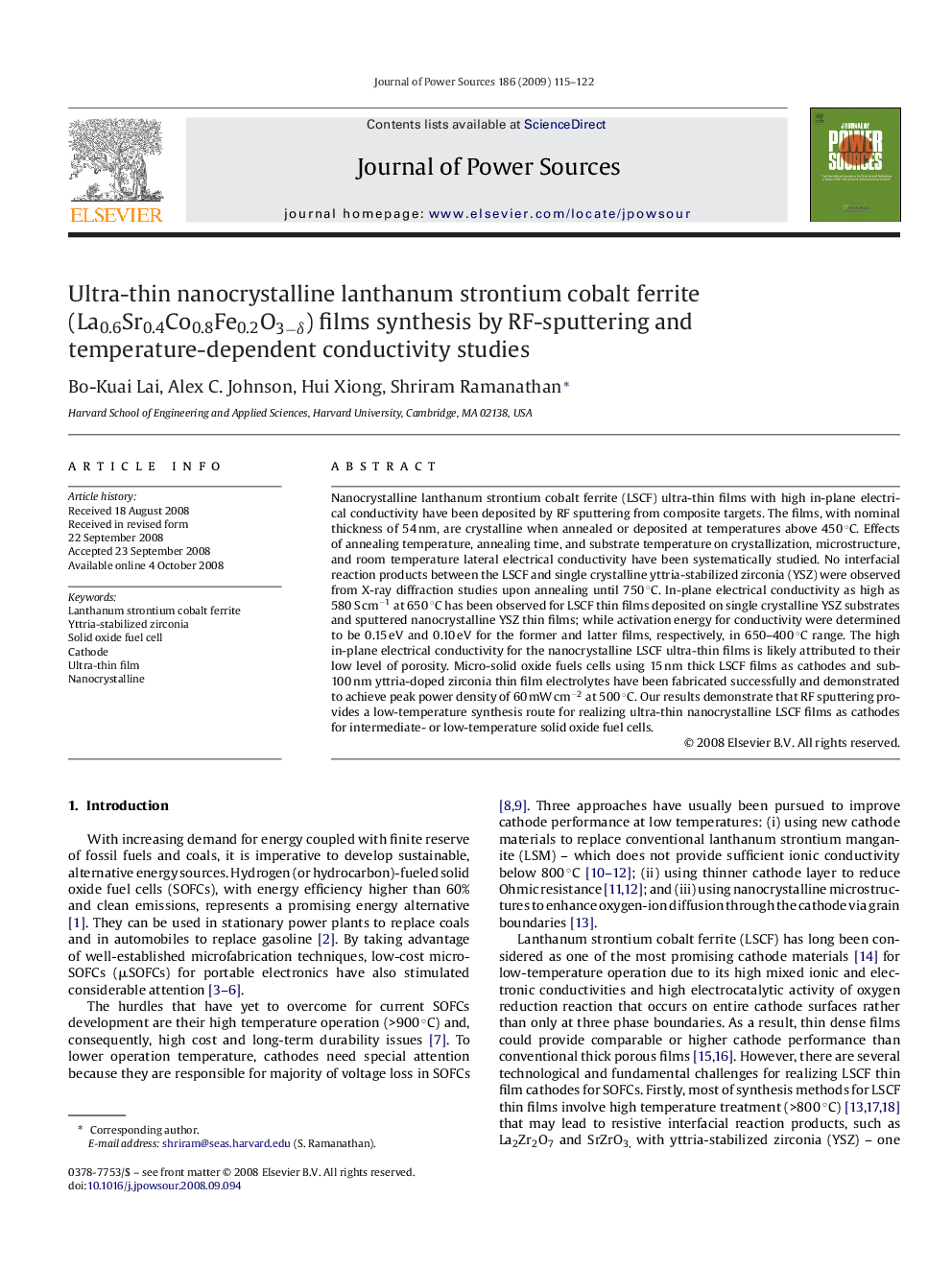| Article ID | Journal | Published Year | Pages | File Type |
|---|---|---|---|---|
| 1289901 | Journal of Power Sources | 2009 | 8 Pages |
Nanocrystalline lanthanum strontium cobalt ferrite (LSCF) ultra-thin films with high in-plane electrical conductivity have been deposited by RF sputtering from composite targets. The films, with nominal thickness of 54 nm, are crystalline when annealed or deposited at temperatures above 450 °C. Effects of annealing temperature, annealing time, and substrate temperature on crystallization, microstructure, and room temperature lateral electrical conductivity have been systematically studied. No interfacial reaction products between the LSCF and single crystalline yttria-stabilized zirconia (YSZ) were observed from X-ray diffraction studies upon annealing until 750 °C. In-plane electrical conductivity as high as 580 S cm−1 at 650 °C has been observed for LSCF thin films deposited on single crystalline YSZ substrates and sputtered nanocrystalline YSZ thin films; while activation energy for conductivity were determined to be 0.15 eV and 0.10 eV for the former and latter films, respectively, in 650–400 °C range. The high in-plane electrical conductivity for the nanocrystalline LSCF ultra-thin films is likely attributed to their low level of porosity. Micro-solid oxide fuels cells using 15 nm thick LSCF films as cathodes and sub-100 nm yttria-doped zirconia thin film electrolytes have been fabricated successfully and demonstrated to achieve peak power density of 60 mW cm−2 at 500 °C. Our results demonstrate that RF sputtering provides a low-temperature synthesis route for realizing ultra-thin nanocrystalline LSCF films as cathodes for intermediate- or low-temperature solid oxide fuel cells.
